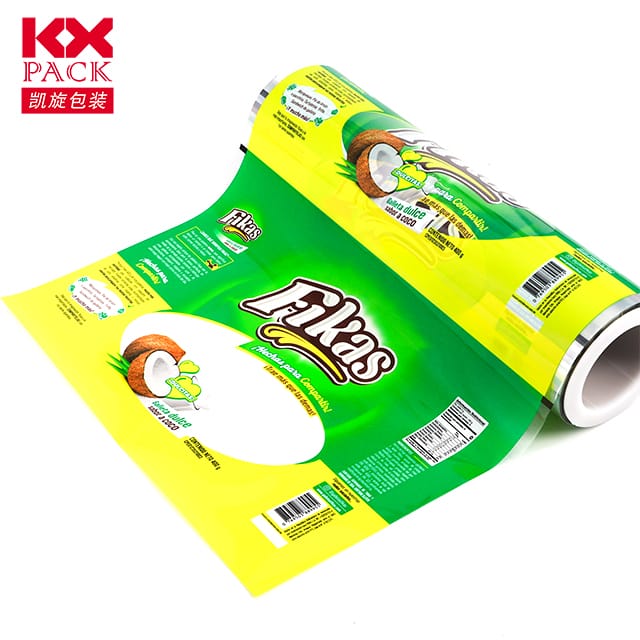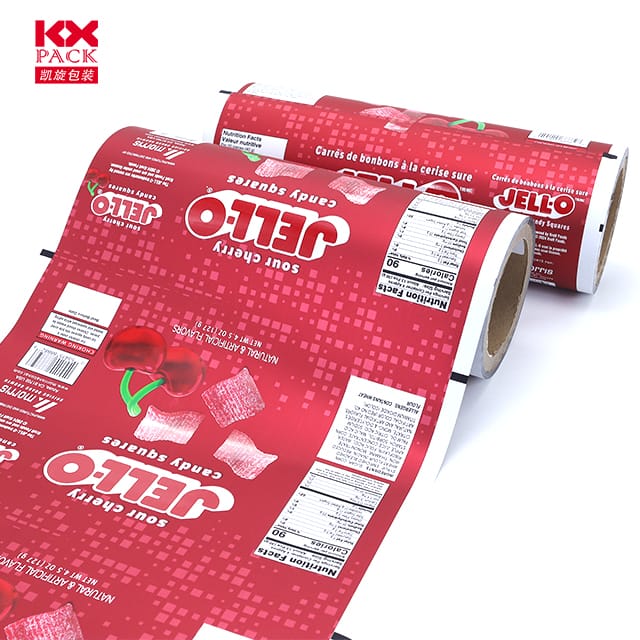Tipus de pel·lícules d’envasament flexibles: A Comprehensive Guide for Modern Applications
Film Flexible Packaging
In today’s fast-paced world, Film Flexible Packaging has become a cornerstone of industries ranging from food and beverages to pharmaceuticals and personal care. The versatility, durabilitat, and cost-effectiveness of flexible films make them ideal for protecting products while enhancing shelf appeal. malgrat això, with numerous film types available, selecting the right option for your specific needs can be overwhelming. This guide explores the most common flexible packaging film types, their unique properties, and applications.
1. Polyethylene (PE) Pel·lícules
Polyethylene is a workhorse in flexible packaging due to its exceptional flexibility, chemical resistance, and moisture barrier properties.
- Tipus:
- LDPE (Low-Density PE): Offers high clarity and tear resistance, often used for shrink wraps and frozen food packaging.
- Llde (Linear Low-Density PE): Stronger than LDPE, with superior puncture resistance, ideal for heavy-duty bags and industrial liners.
- HDPE (High-Density PE): Rigid and opaque, used for bottles, containers, and non-food applications like detergent pouches.
- Aplicacions: Food packaging, frozen goods, industrial liners, and agricultural films.
2. Polipropilè (PP) Pel·lícules
Known for its high melting point and stiffness, Film Flexible Packaging are favored in applications requiring heat resistance.
- Tipus:
- BOPP (Biaxially-Oriented PP): Glossy and transparent, used for snack packaging, etiquetes, and overwrap.
- CPP (Cast PP): Heat-sealable and flexible, ideal for lid seals, flow wraps, and medical packaging.
- Aplicacions: Microwaveable packaging, snack foods, etiquetes, and medical devices.
3. Polyester (PET) Pel·lícules
PET’s superior tensile strength, clarity, and gas barrier properties make it a premium choice for products needing extended shelf life.
- Tipus:
- BoPET (Biaxially-Oriented PET): High-gloss and dimensionally stable, used for printed laminates, electronics, and coffee bags.
- APET (Amorphous PET): Transparent and formable, suitable for thermoformed trays and blisters.
- Aplicacions: Beverage bottles, food trays, electronics, i farmacèutics.
4. Aluminum Foil Laminates
Aluminum foil provides unparalleled barrier protection against light, oxigen, i humitat, making it critical for sensitive products.
- Structure: Often laminated with PE or PP for flexibility and heat-sealability.
- Aplicacions: Coffee packets, pet food, productes lactis, and pharmaceutical blisters.
5. Pel·lícules biodegradables
As sustainability gains traction, biodegradable films made from PLA (àcid polilàctic), PHA (polyhydroxyalkanoates), or starch-based materials are rising in popularity.
- Avantatges: Compostable, reducing plastic waste.
- Reptes: Higher cost and sensitivity to moisture.
- Aplicacions: Fresh produce, organic snacks, and eco-conscious brands.
6. Nylon Films
Nylon’s exceptional puncture resistance and gas barrier properties suit it for high-performance applications.
- Tipus: Oriented nylon (ONY) and cast nylon.
- Aplicacions: Vacuum-packed meats, cheese packaging, and industrial parts.
Key Considerations for Selection
- Product Sensitivity: Choose films with high barriers for oxygen-sensitive items (P., cafè, fruits secs).
- Temperature Requirements: Film Flexible Packaging or nylon for heat resistance; PE for cold storage.
- Sustainability Goals: Opt for biodegradable or recyclable materials.
- Eficàcia de costos: Balance performance with budget—e.g., PET for premium products vs. PE for cost-sensitive markets.
Market Trends
- Sostenibilitat: Brands are increasingly adopting biodegradable and recyclable films to meet eco-conscious consumer demands.
- Innovació: Advances in nanotechnology and smart packaging (P., Indicadors de temperatura del temps) are enhancing functionality.
- Compliment regulatori: Compliance with FDA, EU, and local regulations for food contact and recyclability is non-negotiable.
Conclusió
Selecting the right flexible packaging film is a blend of science and strategy. By understanding material properties, application requirements, and market trends, businesses can optimize product protection, vida útil, and brand appeal. As the industry evolves toward greener solutions, staying informed about biodegradable alternatives and innovative technologies will be key to future-proofing your packaging strategy.
Whether you’re packaging perishable goods, subministraments mèdics, or industrial components, the perfect film exists—it’s just a matter of knowing where to look!






